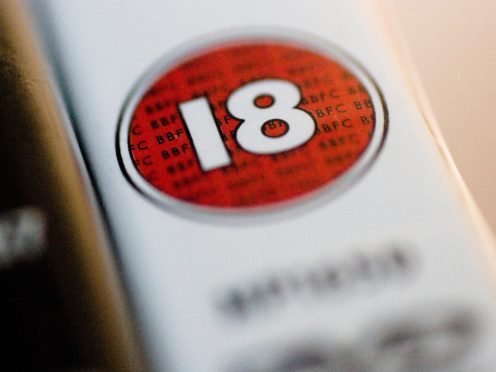Film classifications are to shift to tackle a media world which has “changed beyond all recognition” and reflect the public’s altered views of sex and violence.
Research showed that young people are more disturbed by “credible real-life scenarios”, and there is a greater clamour to control sexual content over violent material.
New guidelines have been released by the British Board of Film Classification (BBFC) to protect people watching potentially disturbing content through streaming services rather than on DVD or at the cinema.
A consultation involving more than 10,000 people found that 97% of both young people and parents want guidelines in place for online content, according to the BBFC. It claims more people than ever want tougher classification.
The research also showed a tolerance of violent scenes, but a call for tighter control of sexual depictions. There was a demand for higher classifications for media featuring depictions of rape and sexual assault.
Real-world scenarios were found to be the most troubling for viewing audiences, and young people in particular were uncomfortable with portrayals of discrimination, terrorism, self-harm and suicide.

New guidelines will seek to address the changing needs of the British public, and bring order to ever-increasing content from non-traditional media.
BBFC chief executive David Austin said: “Over the last five years the way we consume film and video has changed beyond all recognition. That’s why it’s so important that there is consistency between what people watch on and offline.
“The research shows that parents and teenagers want us to give them the information and guidance that they need to view what’s right for them.
“We are updating our standards around depictions of sexual violence and very strong sex references to reflect changes in public attitudes.”
The BBFC claims the British audience consulted on classifications had changed their views of sex since 2014, and wanted higher classifications for sexual content, especially with regard to sexual violence.
Strong sexual references and what the BBFC called “the language of pornography” were also expected to make a production an 18 certificate.
Classification guidelines will reflect these shifts in public attitudes.
The study claimed that young people are particularly concerned about viewing fictional scenarios which could potentially happen to them. A surprising 95% of teenagers called for stronger classification, according to the BBFC.
The BBFC also said its research showed that audiences are more tolerant of violent content than other potentially troubling material.
Mr Austin added: “We’re here to listen to what people want, which is why they trust our age ratings. So it’s encouraging to know that we’ve been classifying content in line with what people want and expect when it comes to difficult themes around credible real-life scenarios.
“We also know that people are more comfortable with issues such as action violence, if it’s in a way that they are expecting – such as a Bond or Bourne film.”
The BBFC is a not-for-profit organisation which began as the British Board of Film Censors in 1912. Its new guidelines will be released on February 28.
